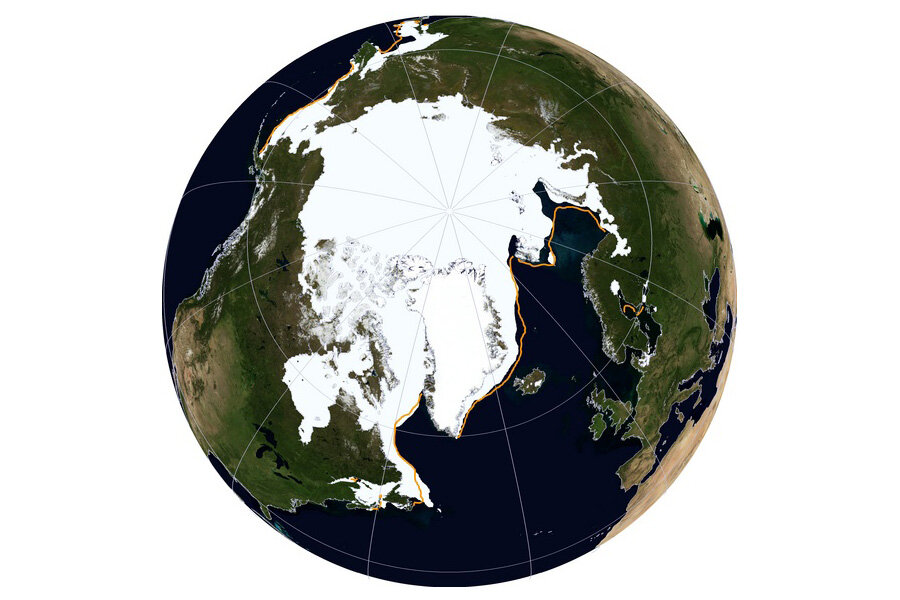Arctic sea ice on the decline, say researchers
Loading...
Despite a late-season boost from the cold weather patterns similar to those that blasted England with terrific storms in February, Arctic sea ice is still on a long-term decline, according to the National Snow and Ice Data Center.
The Arctic ice cap expands every winter and shrinks every summer, in response to changing temperatures, sunlight and weather conditions. The sea ice hit its annual peak on March 21, covering 5.76 million square miles (14.91 million square kilometers), the NSIDC reported last week. That's the fifth-lowest maximum extent since satellite record keeping started in 1979.
But until mid-March, researchers monitoring the icy blanket's annual growth thought the sea ice would be even smaller this year.
This winter, the Arctic ice cover was hovering significantly below long-term averages through the beginning of March, the NSIDC said. But ice pack surged toward the Barents Sea north of Norway and the Bering Sea between Alaska and Russia in mid-March, driven by strong winds. The surface winds were kicked up by an low-pressure weather system in the eastern Arctic and North Atlantic associated with a positive phase of the Arctic Oscillation, the NSIDC said. The Arctic Oscillation is an atmospheric circulation pattern over the northern polar region that affects the jet stream. It causes stormy conditions over the North Atlantic when it is in a positive, low-pressure phase. [Video: Arctic Sea-Ice Continues To Thin]
In the past decade, the Arctic ice-cap extent has bobbed back and forth among top 10 record lows, all the while continuing an overall steady decline that started in the 1970s. Since 1978, the winter Arctic ice cap has shrunk by 12 percent per decade, the NSIDC said in a statement. The lowest winter maximum on record occurred in 2011, when the sea ice extended 5.65 million square miles (14.63 million square km).
On the other hand, the proportion of so-called multiyear ice was higher this year than in 2013: About 43 percent of this year's ice was more than a year old, compared to only 30 percent last winter. Still, much of that multiyear ice is only two years old, left over from the relatively cool 2013 Arctic summer melt season. Only 7 percent of the multiyear ice is older than 5 years, half of the amount present in February 2007.
Email Becky Oskin or follow her @beckyoskin. Follow us @livescience, Facebook & Google+. Original article on Live Science.
- Images of Melt: Earth's Vanishing Ice
- Top 10 Surprising Results of Global Warming
- Weirdo Weather: 7 Rare Weather Events
Copyright 2014 LiveScience, a TechMediaNetwork company. All rights reserved. This material may not be published, broadcast, rewritten or redistributed.







